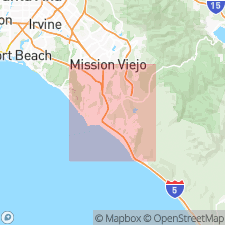
- Usage in publication:
-
- San Pedro schist breccia and sandstone
- Modifications:
-
- Original reference
- Dominant lithology:
-
- Schist
- Sandstone
- Breccia
- Shale
- AAPG geologic province:
-
- Los Angeles basin
Summary:
Pg. 210-211. San Pedro schist breccia and sandstone. Point Fermin at San Pedro is composed of blue schist sandstone, with a little breccia of various sorts, interfingering with more or less purely diatomaceous shale. One may trace in the sea cliffs the gradual change from a section that is chiefly blue sandstone to one exclusively made up of thin beds of white shale. At very tip of Point Fermin there are 100 feet of tar-saturated blue schist sandstone intercalated in the shale series. In this sandstone are included several 1- to 3-foot beds of breccia and, near top and bottom, thin beds of shale. The San Pedro-Point Fermin Oil and Gas Company well at Point Fermin passed through the following materials (oral communication from officers of the company, supplemented by inspection of samples):
0 to 600 feet below sea level. Chiefly fine sandstone and shale.
600 feet to 1,200 feet. Blue sandstone, schist breccia, some shale.
1,200 feet to 1,800 feet?. Soft shale, with blue schist flakes.
1,800 feet? To 2,500 feet. Bedrock, chiefly blue-green quartzose schist.
In San Pedro Hill, 5 miles northwest of Point Fermin, the schists in place are separated from overlying shale by a few feet of fine schist breccia, which along eastern edge of the schists becomes much thicker and probably grades out into shale as at the Point. The overlying shale contains blue sandstone beds and pockets, as well as numerous pumice fragments. The fossil evidence is inadequate for certain correlation of the San Pedro occurences. Fossils [listed] suggest [Early] Miocene age for at least part of the section. However, W.S.W. Kew, of the USGS, who has studied San Pedro region in detail, considers the beds below the Point Fermin breccia to be Upper Miocene and those above Pliocene, on basis of resemblance of the shales to those of the Upper Miocene and Pliocene, respectively, of Santa Monica Mountains. Below the breccia chert predominates, and Kew has never been able to find diatoms; above, soft diatomaceous shale predominates. [Described under center heading "Doubtful correlatives of the San Onofre facies."]
Source: US geologic names lexicon (USGS Bull. 896, p. 1919).
For more information, please contact Nancy Stamm, Geologic Names Committee Secretary.
Asterisk (*) indicates published by U.S. Geological Survey authors.
"No current usage" (†) implies that a name has been abandoned or has fallen into disuse. Former usage and, if known, replacement name given in parentheses ( ).
Slash (/) indicates name conflicts with nomenclatural guidelines (CSN, 1933; ACSN, 1961, 1970; NACSN, 1983, 2005, 2021). May be explained within brackets ([ ]).

